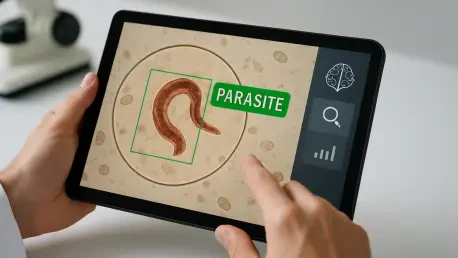I’m thrilled to sit down with Ivan Kairatov, a biopharma expert with a wealth of experience in research and development, and a deep understanding of technological innovation in the industry. Today, we’re diving into a groundbreaking advancement in clinical parasitology: an AI tool developed to detect intestinal parasites in stool samples with unprecedented accuracy. Our conversation will explore the inspiration behind this innovation, the technology powering it, its impact on patient care, and the future potential of AI in diagnostics. Let’s get started.
How did the idea of developing an AI tool for detecting intestinal parasites come about, and what challenges in traditional methods were you aiming to solve?
The inspiration came from recognizing the limitations of traditional microscopy, which relies heavily on highly trained experts manually examining samples for signs of parasites. This process is not only time-consuming but also prone to human error, especially with subtle or rare infections. We saw a clear gap in efficiency and accuracy, and with the rise of artificial intelligence, particularly deep learning, it felt like the perfect opportunity to apply this technology to a problem that impacts so many patients globally. The goal was to create a tool that could enhance diagnostic precision and speed up the process, ultimately improving outcomes.
Can you break down how this AI tool functions in a way that’s easy to understand for someone outside the field?
Absolutely. At its core, the tool uses a type of deep learning model called a convolutional neural network, which is excellent at analyzing images. We feed it digital images of stool samples, and it’s trained to recognize specific patterns—like the shapes of parasite eggs, cysts, or larvae—that indicate an infection. Unlike traditional microscopy, where a person spends hours peering through a lens, this AI processes images in a fraction of the time, often identifying things the human eye might miss. It’s like having a tireless, super-observant assistant in the lab.
The research highlights that this AI has greater clinical sensitivity compared to human observers. What does that mean for patients in practical terms?
It means the AI is better at detecting parasites, even when they’re present in very small amounts or at early stages of infection. For patients, this translates to fewer missed diagnoses, which is critical because untreated parasitic infections can lead to serious health issues. Catching these infections earlier often means faster treatment, less severe symptoms, and a lower risk of complications. It’s a game-changer for ensuring people get the care they need promptly.
Training an AI to recognize 27 different classes of parasites, including rare ones, sounds like a massive undertaking. Can you share how you approached this process?
It was indeed a huge effort. We gathered over 4,000 positive samples from diverse regions—think the US, Europe, Africa, and Asia—to ensure the AI was exposed to a wide variety of parasites, including uncommon species. Each sample was carefully analyzed and labeled by experts to teach the AI what to look for. The diversity of the dataset was key because parasites can vary significantly based on geography or host. It took a lot of collaboration and rigorous validation to make sure the system could handle this range with high accuracy.
One striking result was the AI detecting 169 additional organisms that were missed during manual reviews. What does this tell us about the tool’s capabilities?
It’s a testament to the AI’s precision and sensitivity. Honestly, we were amazed at how many additional organisms it picked up, which just shows how even experienced technologists can overlook subtle signs under a microscope. This finding suggests that the AI doesn’t just match human performance—it often exceeds it. It’s a strong argument for integrating this technology into routine lab work, potentially setting a new standard for how we approach parasite detection.
The AI’s ability to detect parasites in highly diluted samples or at earlier stages of infection seems particularly significant. How does this impact the diagnostic process?
It’s incredibly important because early detection can make all the difference in managing infections. When samples are diluted or parasite levels are low, they’re much harder to spot with traditional methods. The AI’s sensitivity allows us to identify infections before they become severe, which means patients can start treatment sooner. This could also help in preventing the spread of infections, especially in communities where parasitic diseases are common. It’s about getting ahead of the problem rather than playing catch-up.
Looking ahead, what is your forecast for the role of AI in diagnostic technologies, particularly in fields like parasitology?
I’m very optimistic about AI’s future in diagnostics. In parasitology, I see AI becoming a cornerstone of lab testing, not just for stool samples but potentially for other types of infections as well. Beyond that, I think we’ll see AI integrated into broader areas of healthcare, from imaging to predictive analytics, helping clinicians make faster, more accurate decisions. The key will be continuing to refine these tools, ensuring they’re accessible to labs worldwide, and training staff to work alongside AI effectively. It’s not about replacing humans but empowering them to do better work.









